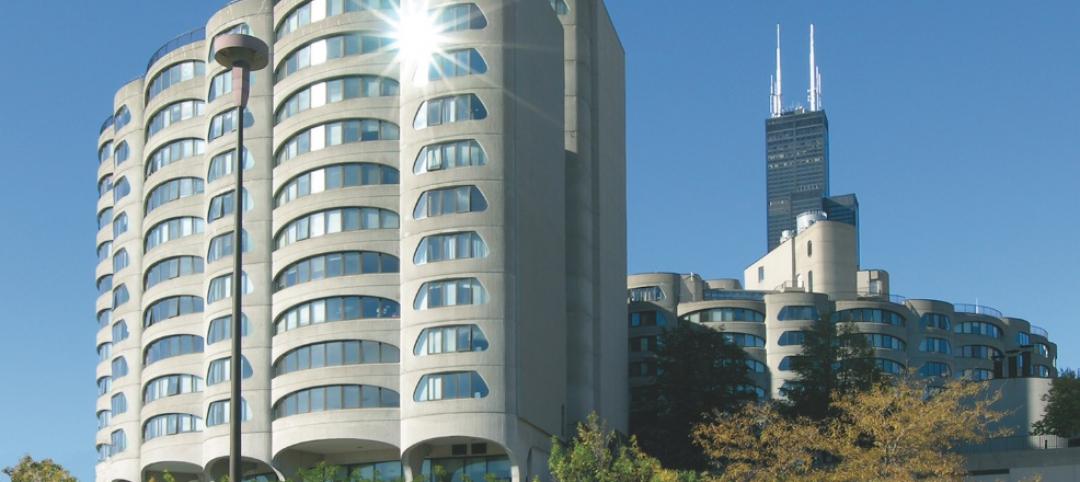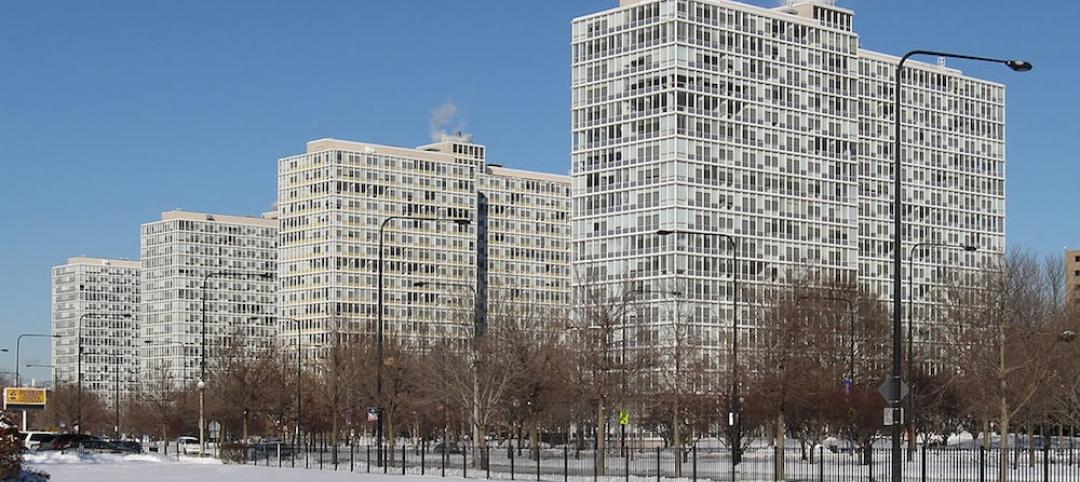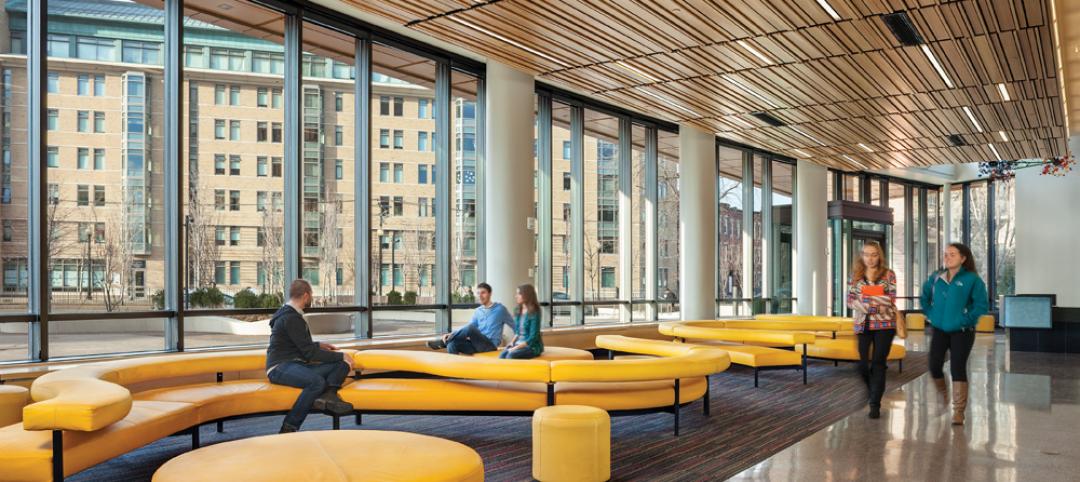In its ongoing effort to develop a downtown core, the Toronto suburb of Mississauga, Ont., recently announced the launch of M City, a 10-tower, 15-acre, 4.3 million sf master-planned community that, when completed, will cost C$1.5 billion (US$1.118 billion).
Construction is scheduled to begin in the summer of 2018.
This project represents the first residential condominium project undertaken by the private holding company Rogers Real Estate Development Ltd. The Rogers family controls Rogers Communications, Canada’s second-largest communications and media conglomerate.
Urban Capital Property Group, a leading condo developer, will manage the development of M City’s first phase for Rogers. New York-based Cooper Robertson designed the master plan for M City. “The opportunity with M City was to define the western edge of downtown. That was our goal as we planned a walkable, sustainable mixed-use community that emphasizes the public realm,” says Donald Clinton, a Partner with Cooper Robertson. Other Building team members include Reed Jones Christoffersen (SE), Smith + Anderson (ME and EE), and The Planning Partnership (landscape architect). Rogers had not disclosed the GC on this project at presstime.
The first phase of M City will feature a 51-story residential tower, whose undulating design by CORE Architects rotates seven floor plates in repetition as it ascends. Cecconi Simone will be that building’s interior designer.
The first phase will comprise between 500 and 700 of the 6,000 condo units that M City will ultimately make available at prices ranging from C$200,000 to C$750,000, according to M City’s website. When completed, M City will also offer retail space at grade, and more than two acres of new public parks with European-style outdoor patio spaces.
“It is our hope that M City acts as a catalyst for the continued evolution of Mississauga’s downtown,” says Edward Rogers, deputy chairman of Rogers Communications. “It’s why we have taken on the challenge of developing this property.
 The M City development will include 2 million sf of open and park spaces. Image: Norm Li
The M City development will include 2 million sf of open and park spaces. Image: Norm Li
The land on which M City will sit is part of 43 hectares (106 acres) of farmland that Rogers’ founder Ted Rogers purchased in the 1960s for around C$170,000 to position transmitters for his radio station CHFI. Those transmitters were relocated in the 1990s, and the land that hadn’t been sold off was rezoned in 2002 to allow for mixed-use development.
M City residents will be within walking distances of Square One Shopping Centre, Sheridan College, Mississauga Celebration Square, and the Mississauga Central Public Library. The area is also accessible to MiWay Transit, GO Transit, Highway 403 and the QEW. M City’s signature tower will be next to the downtown loop of a future C$1.3 billion, 20-kilometer (12.4-mile) light-rail system, for which permits were issued in 2015.
Toronto in general, and Mississsauga in particular, are going through transitions. Bloomberg reports that home prices in Toronto have doubled in the last decade, spurring record land transactions and development. Low-rise home prices of about C$700,000 ($530,000) are pushing residents to nearby cities and suburbs and into condominiums offering more affordable options.
[Editor's note: Certain members of this project's Building Team were added to the story after its initial posting.]
Related Stories
Sponsored | | Dec 3, 2014
Modular Space Showcase: Bringing work-life balance to energy workers in the Bakken region
To meet the demands of the booming energy business, Williston needs to provide homes, recreation centers, restaurants, hotels, and other support facilities for the tidal wave of energy workers relocating to the Bakken Shale area. SPONSORED CONTENT
| Dec 2, 2014
First existing multifamily buildings to earn Energy Star certification unveiled
River City in Chicago is one of 17 existing multifamily properties to earn Energy Star certification, which became available to this sector on Sept. 16 via a scoring system for multifamily properties that Energy Star and Fannie Mae had been developing for three years.
| Dec 2, 2014
SPARK designs urban farming housing for Singapore’s elderly population
The proposal blends affordable retirement housing with urban farming by integrating vertical aquaponic farming and rooftop soil planting into multi-unit housing for seniors.
| Nov 24, 2014
Adrian Smith + Gordon Gill-designed crystalline tower breaks ground in southwestern China
Fitted with an LED façade, the 468-meter Greenland Tower Chengdu will act as a light sculpture for the city of Chengdu.
| Nov 24, 2014
Must see: Plans released for underwater city that could house 5,000 people
The design centers around a floating, 500-meter-wide sphere linked to a resource center on the ocean floor via a 15-kilometer, helix-shaped path.
| Nov 21, 2014
Rental apartment construction soars to 27-year high: WSJ report
The multifamily sector is now outpacing the peak construction rate in the previous housing cycle, in 2006, according to the WSJ.
| Nov 18, 2014
New tool helps developers, contractors identify geographic risk for construction
The new interactive tool from Aon Risk Solutions provides real-time updates pertaining to the risk climate of municipalities across the U.S.
| Nov 14, 2014
What college students want in their living spaces
In a recent workshop with 62 college students, architects from Little explored the changing habits and preferences of today's students, and how those changes affect their living spaces.
| Nov 11, 2014
Renzo Piano's third building at London Bridge Quarter approved, will be built adjacent to the Shard
Renzo Piano Building Workshop has been granted planning approval for its residential building at London Bridge Quarter—a 26-story apartment tower dubbed Feilden House.
| Nov 7, 2014
Arts college uses creative financing to build 493-bed student housing
Many states have cut back funding for higher education in recent years, and securing money for new housing has been tougher than ever for many colleges and universities. A recent residence hall project in Boston involving three colleges provides an inspiring example of how necessity can spawn invention in financing strategies.
















